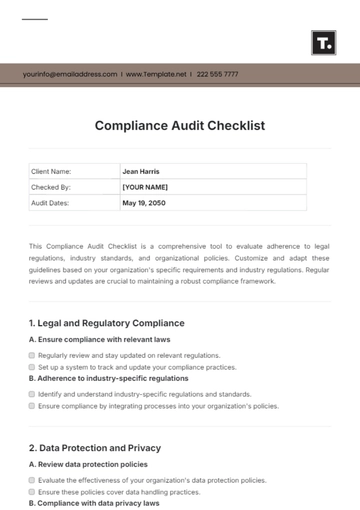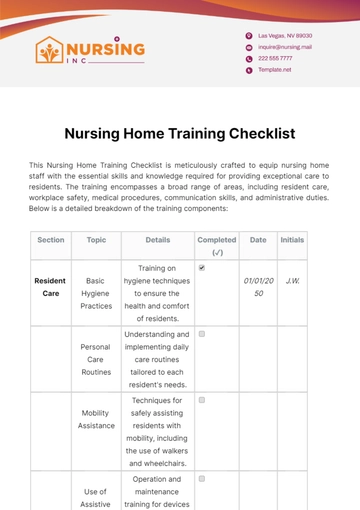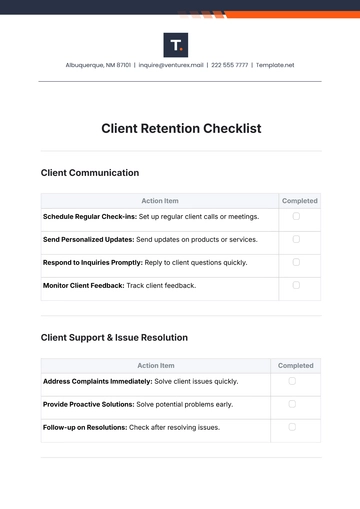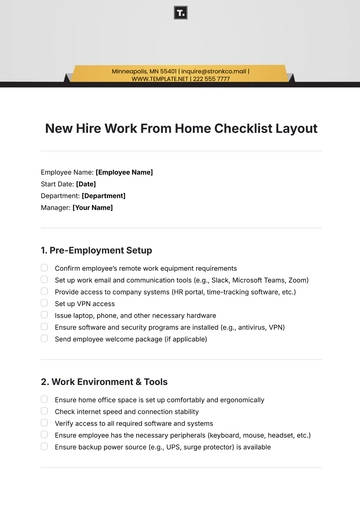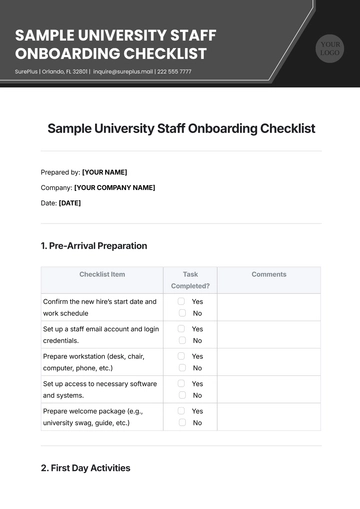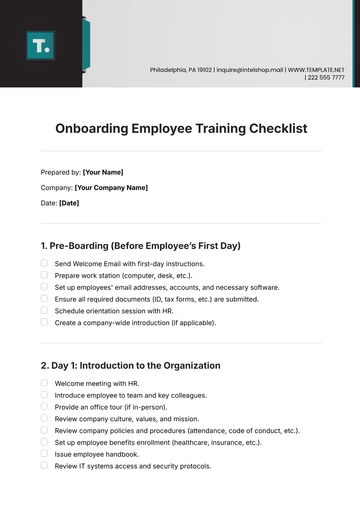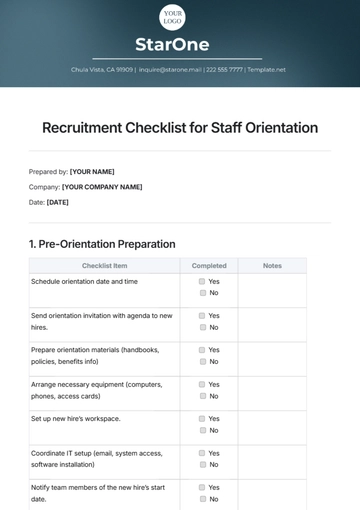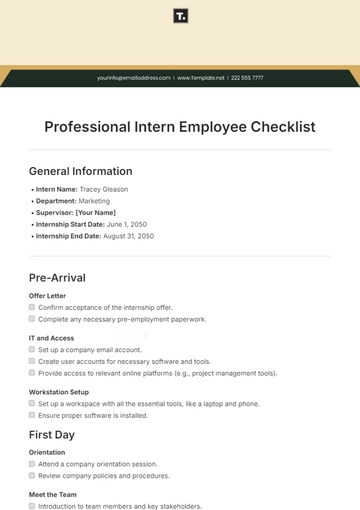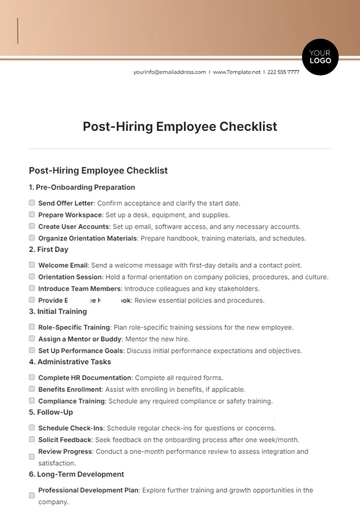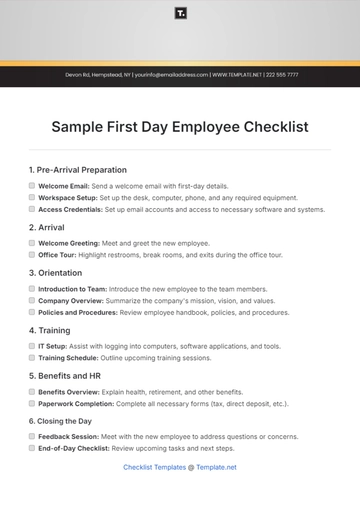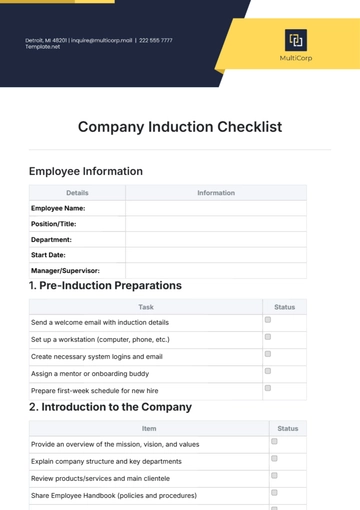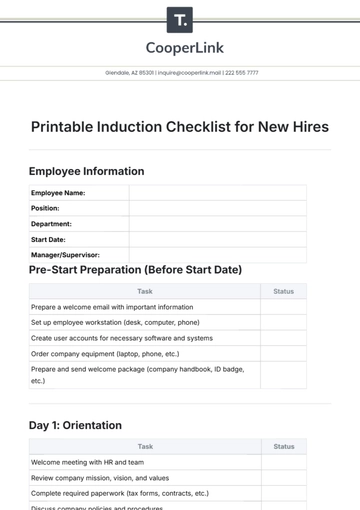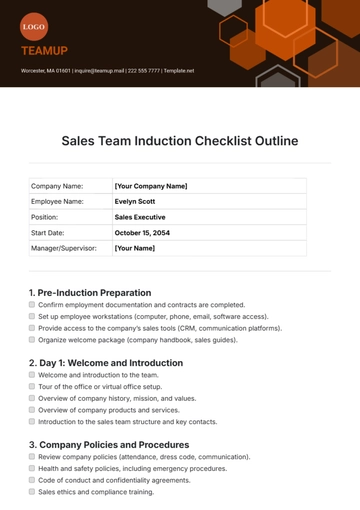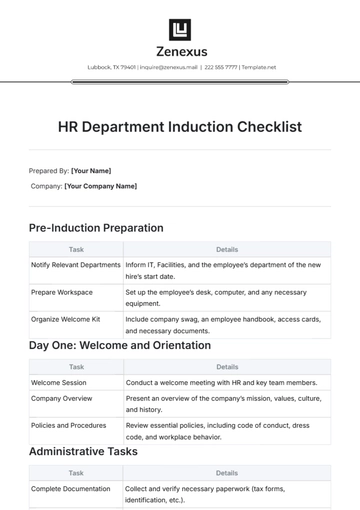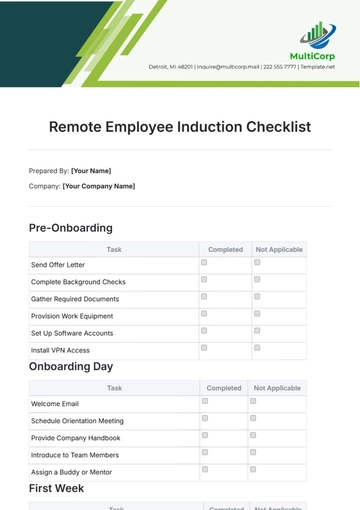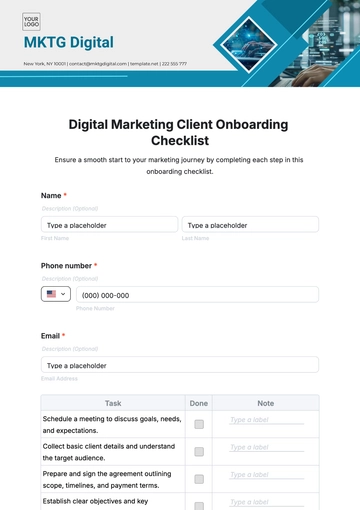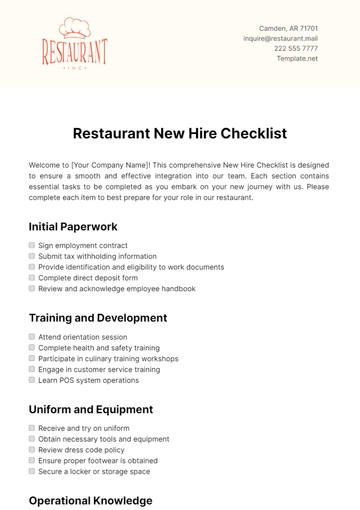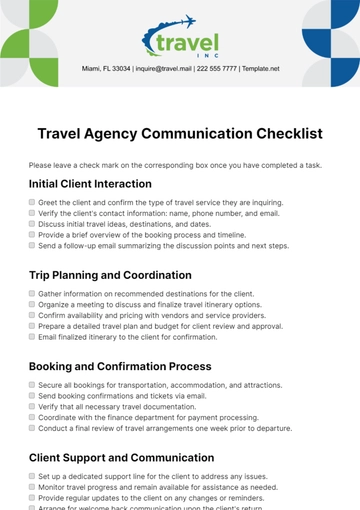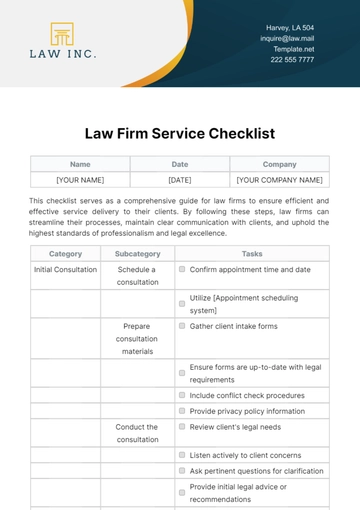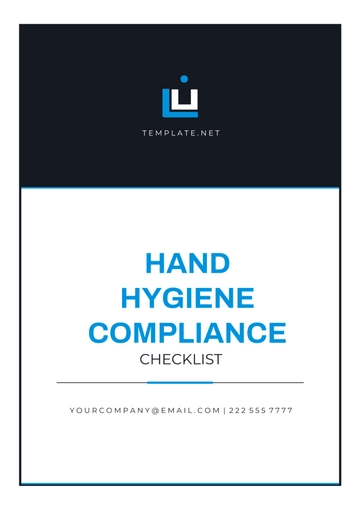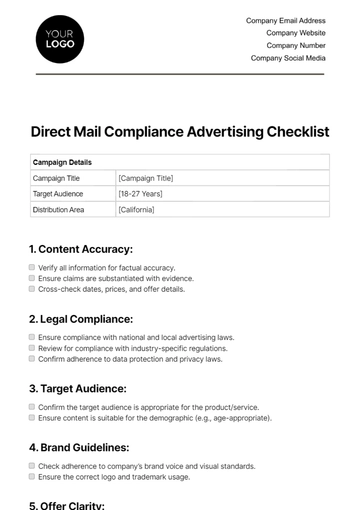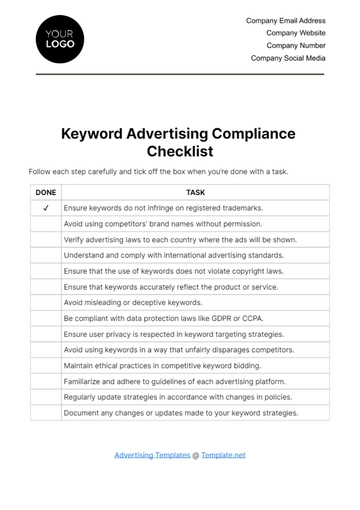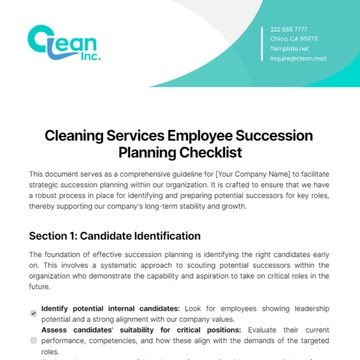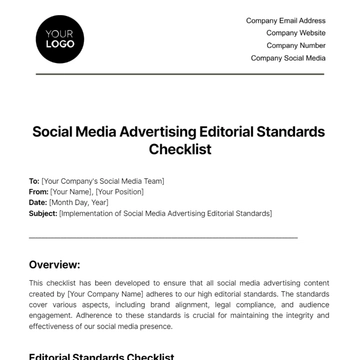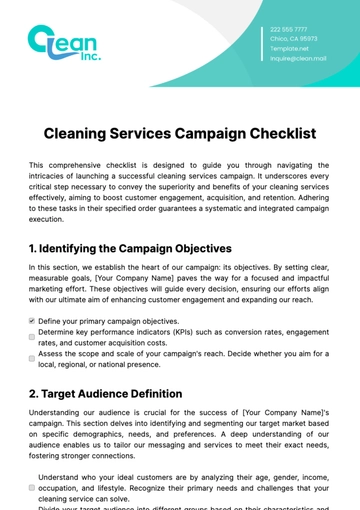Free Cleaning Services Employee Succession Planning Checklist
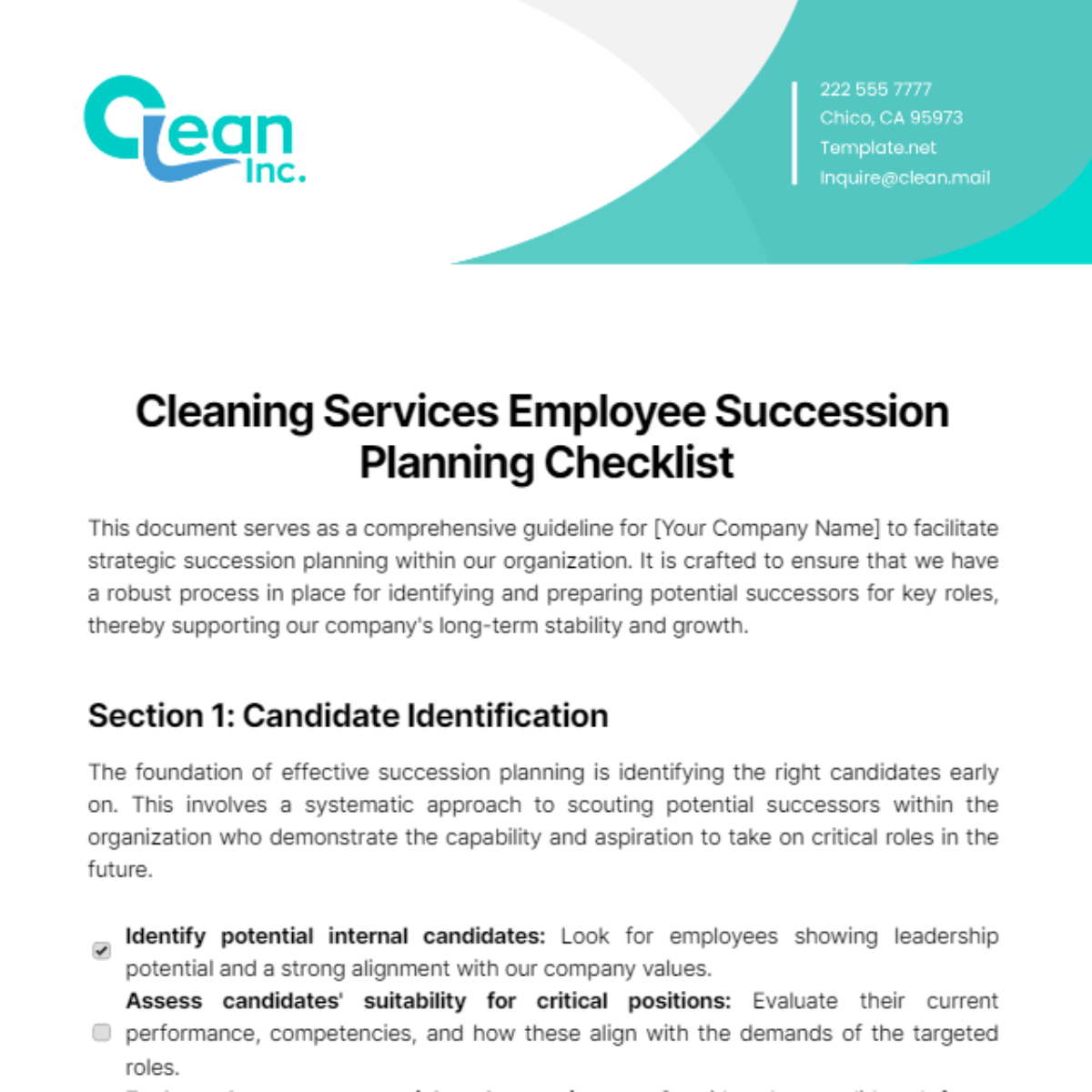
This document serves as a comprehensive guideline for [Your Company Name] to facilitate strategic succession planning within our organization. It is crafted to ensure that we have a robust process in place for identifying and preparing potential successors for key roles, thereby supporting our company's long-term stability and growth.
Section 1: Candidate Identification
The foundation of effective succession planning is identifying the right candidates early on. This involves a systematic approach to scouting potential successors within the organization who demonstrate the capability and aspiration to take on critical roles in the future.
Identify potential internal candidates: Look for employees showing leadership potential and a strong alignment with our company values.
Assess candidates' suitability for critical positions: Evaluate their current performance, competencies, and how these align with the demands of the targeted roles.
Evaluate long-term potential and commitment: Consider the candidates' future growth potential and their commitment to the company.
Consider employee interests and career paths: Align the succession planning process with the individual career aspirations of potential candidates to ensure mutual benefits.
Consult with managerial staff for recommendations: Engage with managers to identify and recommend employees who have shown exceptional capabilities and potential for growth.
Section 2: Developmental Programs
Once potential successors are identified, it's crucial to invest in their development. Customized developmental programs are essential for grooming candidates for their future roles, enhancing their skills, and preparing them for leadership.
Design targeted development programs: Create programs tailored to the unique requirements of each successor candidate, focusing on closing skill gaps and enhancing leadership capabilities.
Implement mentoring and coaching: Pair candidates with experienced leaders for mentoring, providing them with guidance, advice, and feedback.
Offer leadership training: Provide access to leadership development workshops and seminars to build their managerial and strategic skills.
Encourage cross-functional projects: Give candidates opportunities to work on projects outside their usual domain to broaden their experience and understanding of different areas of the business.
Section 3: Equipping with Necessary Skills
Ensuring that successor candidates possess the necessary skills and knowledge is fundamental to prepare them for their future roles. This involves a combination of on-the-job training, formal education, and experiential learning.
Assess and identify skill gaps: Regularly evaluate the skills of potential successors and identify areas requiring improvement.
Provide specific training and education: Offer training sessions, workshops, and courses to equip candidates with the required skills.
Facilitate hands-on experience: Ensure candidates gain practical experience in their prospective roles through job rotations and shadowing opportunities.
Promote continuous learning: Encourage a culture of continuous professional development and lifelong learning.
Section 4: Ensuring Operational Continuity
Operational continuity is key to a smooth transition in leadership roles. Planning for continuity involves understanding the critical functions of each role and ensuring that successors are prepared to take over these responsibilities seamlessly.
Document key processes and responsibilities: Ensure all critical roles have clear documentation of their responsibilities and processes.
Conduct transition planning meetings: Regular meetings between the incumbent and the successor to discuss key responsibilities, ongoing projects, and critical contacts.
Implement shadowing periods: Allow successors to shadow their predecessors to gain insight into daily responsibilities and challenges.
Establish a transition timeline: Create a clear timeline for each succession, detailing key milestones and the official handover date.
Section 5: Maintaining Service Delivery Excellence
The ultimate goal of succession planning is to maintain and enhance the quality of service delivery through smooth transitions. This ensures that our clients continue to receive the high standards of service they expect, even during periods of change.
Regularly evaluate service delivery standards: Monitor and assess the quality of service delivery to ensure it meets or exceeds client expectations.
Incorporate feedback mechanisms: Use client and employee feedback to continually refine our service offerings and operational procedures.
Foster a culture of excellence: Encourage an organizational culture that prioritizes high-quality service delivery, innovation, and continuous improvement.
Ensure successors understand client needs: Equip successors with a deep understanding of our clients' needs and expectations to ensure they are well-prepared to lead.
This checklist outlines a strategic and structured approach to succession planning at [Your Company Name]. By meticulously following these steps, we can ensure the continued growth, resilience, and success of our organization, thereby securing our position as a leader in the cleaning services industry.
Prepared By: [Your Name]
- 100% Customizable, free editor
- Access 1 Million+ Templates, photo’s & graphics
- Download or share as a template
- Click and replace photos, graphics, text, backgrounds
- Resize, crop, AI write & more
- Access advanced editor
Manage your cleaning service staff transitions smoothly with Template.net's Cleaning Services Employee Succession Planning Checklist Template. This editable and customizable tool curated for your business's efficiency. It's editable in our Ai Editor Tool, ensuring successful personnel handovers. Empower your business growth, maximize continuity, and mitigate risk. Your roadmap to seamless team transitions is just a few clicks away.
You may also like
- Cleaning Checklist
- Daily Checklist
- Travel Checklist
- Self Care Checklist
- Risk Assessment Checklist
- Onboarding Checklist
- Quality Checklist
- Compliance Checklist
- Audit Checklist
- Registry Checklist
- HR Checklist
- Restaurant Checklist
- Checklist Layout
- Creative Checklist
- Sales Checklist
- Construction Checklist
- Task Checklist
- Professional Checklist
- Hotel Checklist
- Employee Checklist
- Moving Checklist
- Marketing Checklist
- Accounting Checklist
- Camping Checklist
- Packing Checklist
- Real Estate Checklist
- Cleaning Checklist Service
- New Employee Checklist
- Food Checklist
- Home Inspection Checklist
- Advertising Checklist
- Event Checklist
- SEO Checklist
- Assessment Checklist
- Inspection Checklist
- Baby Registry Checklist
- Induction Checklist
- Employee Training Checklist
- Medical Checklist
- Safety Checklist
- Site Checklist
- Job Checklist
- Service Checklist
- Nanny Checklist
- Building Checklist
- Work Checklist
- Office Checklist
- Training Checklist
- Website Checklist
- IT and Software Checklist
- Performance Checklist
- Project Checklist
- Startup Checklist
- Education Checklist
- Home Checklist
- School Checklist
- Maintenance Checklist
- Planning Checklist
- Manager Checklist
- Wedding Checklist
- Vehicle Checklist
- Travel Agency Checklist
- Vehicle Inspection Checklist
- Interior Design Checklist
- Backpacking Checklist
- Business Checklist
- Legal Checklist
- Nursing Home Checklist
- Weekly Checklist
- Recruitment Checklist
- Salon Checklist
- Baby Checklist
- Equipment Checklist
- Trade Show Checklist
- Party Checklist
- Hospital Bag Checklist
- Evaluation Checklist
- Agency Checklist
- First Apartment Checklist
- Hiring Checklist
- Opening Checklist
- Small Business Checklist
- Rental Checklist
- College Dorm Checklist
- New Puppy Checklist
- University Checklist
- Building Maintenance Checklist
- Work From Home Checklist
- Student Checklist
- Application Checklist
